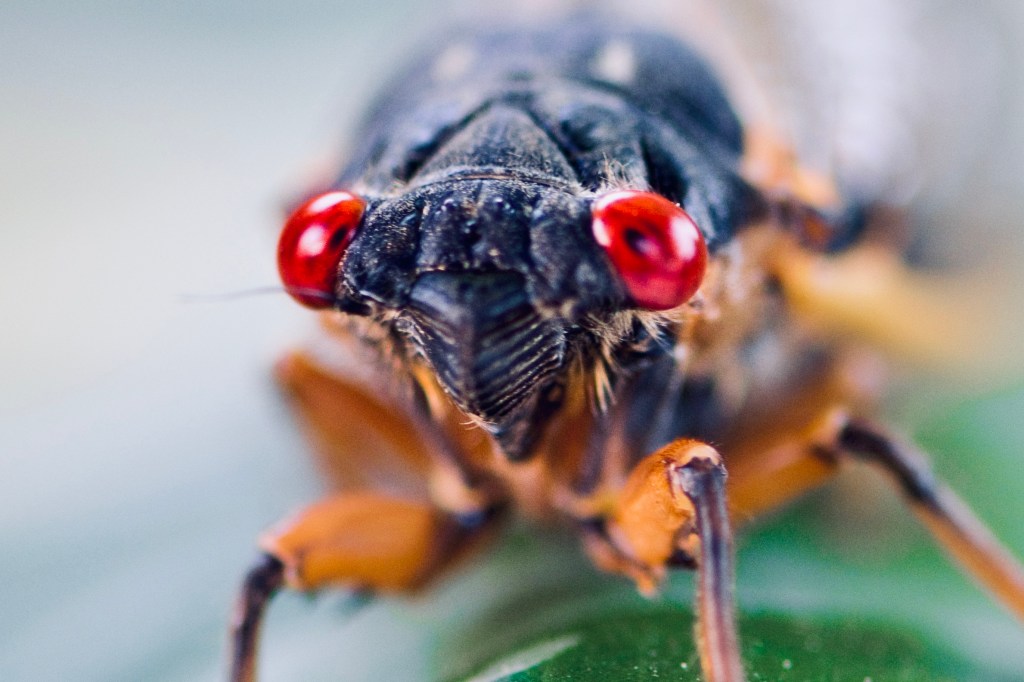The cicadas are coming (Picture: Getty)
An invasion is coming in 2024, one that hasn’t happened in 221 years. And it isn’t the French.
It is millions, and millions, of flying red-eyed bugs, all hatching at once to form a mega-plague.
Fun!
They are cicadas. Inch-long insects that look a lot like grasshoppers and have a deafening shriek.
Cicadas come in many different forms, including ‘periodical’ bugs, which spend more than a decade of their lives living underground as larvae, feeding on fluid from plant roots. A rather depressing existence some might say.
Then, after either 13 or 17 years, they all emerge in one massive bug cloud, burrowing up and out through the soil, shedding their exoskeletons and flying around frantically trying to find a mate to start the whole thing all over again.
Brood X Cicada swarm on a fence (Picture: Getty/iStockphoto)
But this year, one of the 13-year groups, known rather ominously as Brood XIX, and a 17-year group, Brood XIII, are set to hatch together. That is double the bugs.
Before you start sealing all your windows shut though, some important information – cicadas are only found in eastern and central states in the US, not the UK.
Unfortunately for residents of Iowa, Indiana and Illinois, however, both broods live in all three states.
And if that’s not enough, they’re also the loudest insects in the world – their mating call has been measured at up to 90 decibels, about as loud as a lawnmower.
Still, if you’re a maths fan like Professor Hannah Fry, this year’s lot makes for an extra special plague.
In a video posted on social media, the maths whizz and presenter shared her excitement at the numeric clash.
‘The thing is, for extra drama, all of the cicadas are completely sychronised with one another,’ she said.
‘So every single 13-year-old cicada emerges from the ground, simultaneously flies around, has a massive party, sheds their exoskeletons, makes a massive mess and then dies. Scene.
‘They do this because it helps them evade predators. There are so many of them simultaneously, there’s no way the predators could eat all of them so a massive proportion of them survive to the next generation.’
This still happens every year, because there are so many different broods – and annual cicadas. But 2024 is different.
A cicada larvae emerging (Picture: Getty)
‘Thirteen years and 17 years are special because they’re both prime numbers, which means it’s really hard for a predator to have a cycle that syncs up with them,’ said Professor Fry.
‘Also, they almost never sychronise with each other. Thirteen and 17 kind of missing each other – apart from every 221 years, when all appear simultaneously.
‘And the last time that this happened was in 1803, when Thomas Jefferson was president and Napoleon was thinking about invading England.’
Oh, and they also have a fungal STI that makes their genitals fall off.


